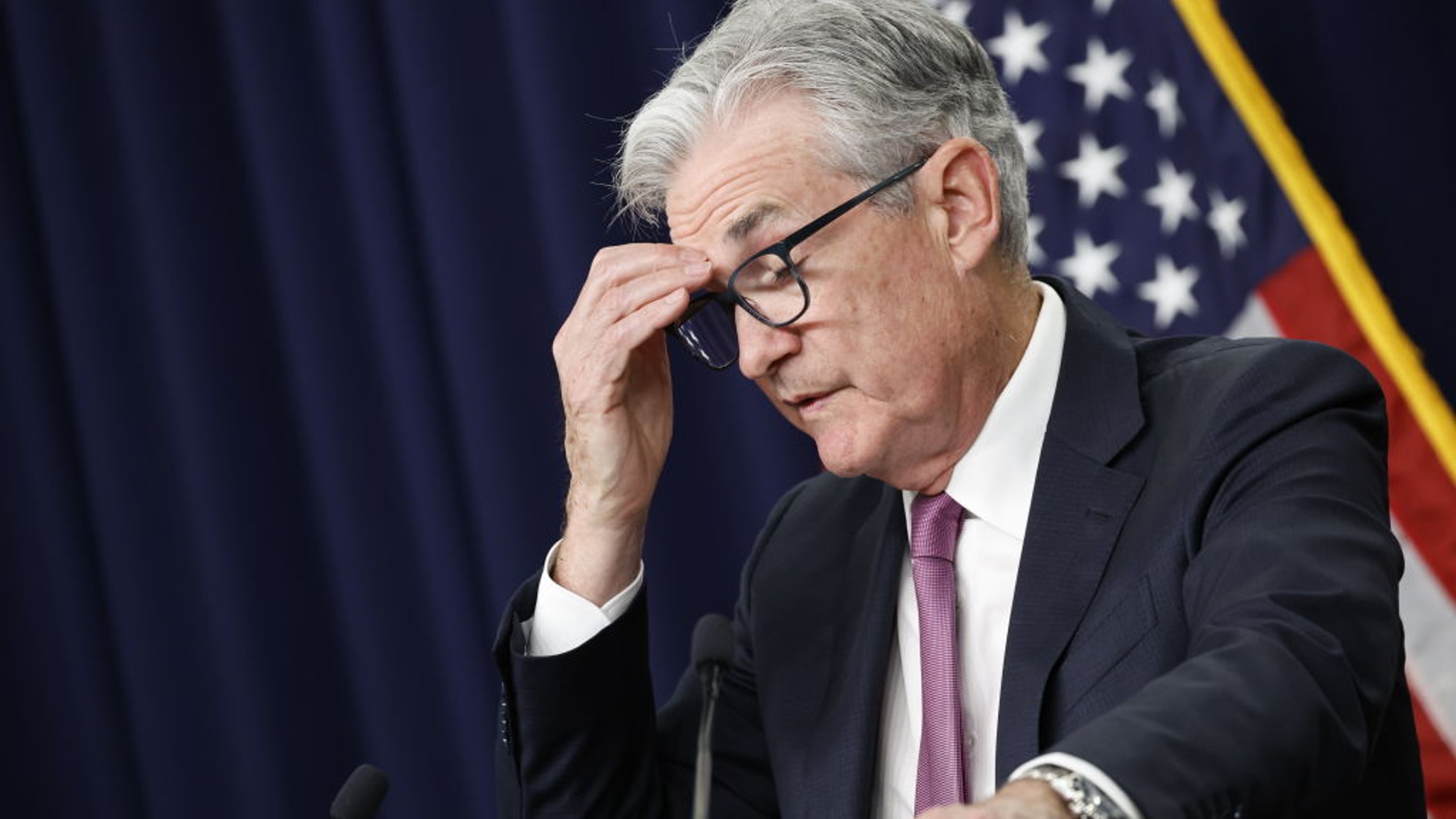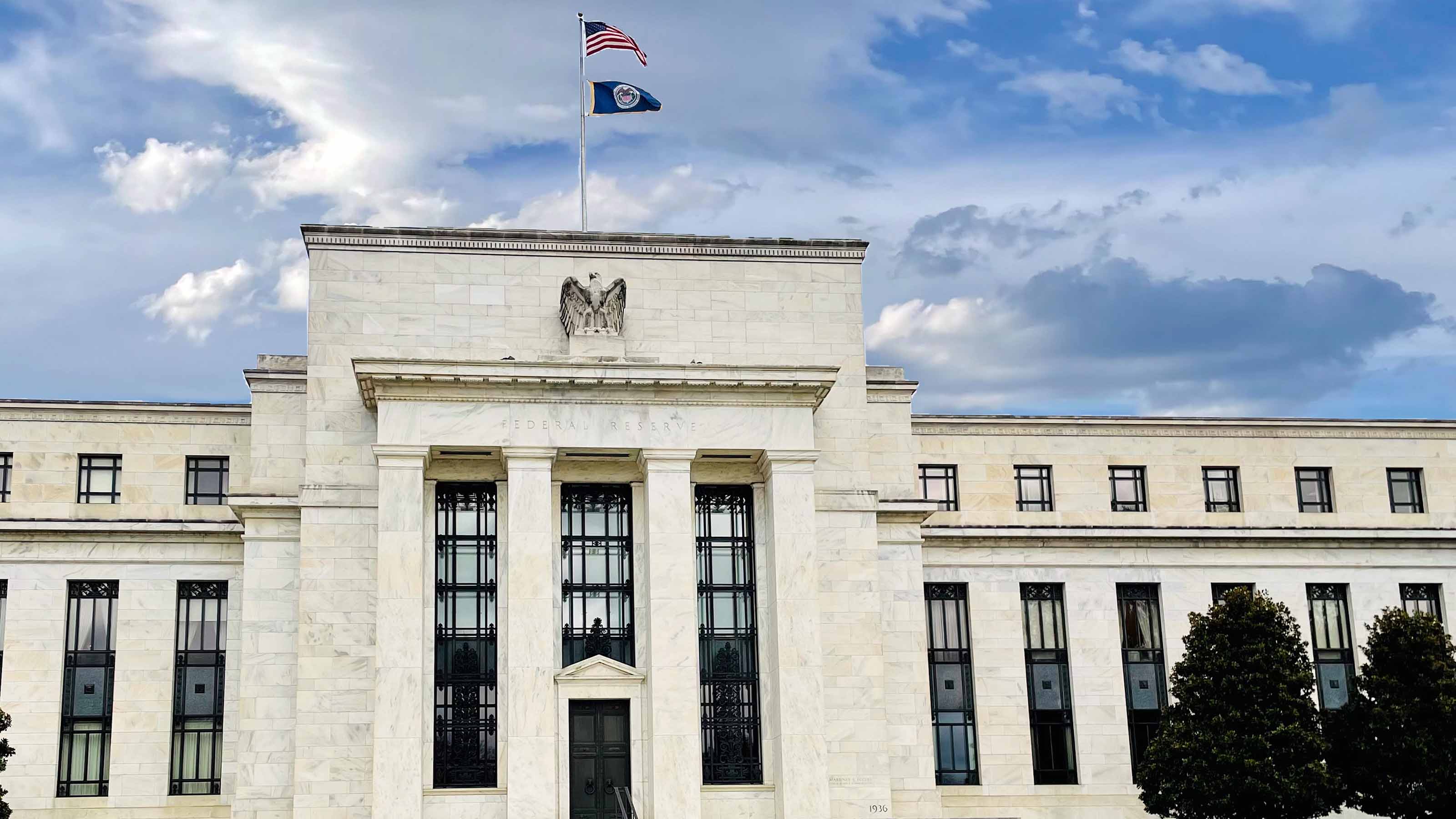Fed Lifts Interest Rates Yet Again: What the Experts Are Saying
Although the Fed raised interest rates for a 10th consecutive meeting, it finally opened the door to a pause in its tightening campaign.


The Federal Reserve raised interest rates for a 10th consecutive time on Wednesday, but this might be the last rate hike of the cycle. A change in the central bank's policy statement suggested that it could at long last pause its tightening campaign at the next Fed meeting.
The central bank's rate-setting group, known as the Federal Open Market Committee (FOMC), wrapped up its regularly scheduled two-day meeting by increasing the short-term federal funds rate by 25 basis points, or 0.25%, to a target range of 5.0%-5.25%.
The quarter-point increase was widely anticipated by market participants. The burning question now is whether the Fed is finished raising rates.
From just $107.88 $24.99 for Kiplinger Personal Finance
Become a smarter, better informed investor. Subscribe from just $107.88 $24.99, plus get up to 4 Special Issues

Sign up for Kiplinger’s Free Newsletters
Profit and prosper with the best of expert advice on investing, taxes, retirement, personal finance and more - straight to your e-mail.
Profit and prosper with the best of expert advice - straight to your e-mail.
Importantly, the central bank omitted prior language from its policy statement saying "some additional policy firming" may be warranted. Experts say the change suggests the FOMC could pause raising rates when it next meets in June.
Wednesday's quarter-point hike represented a continuation of policy from the Fed's March confab, in which it also hiked interest rates by 25 basis points.
To recap: March's rate hike itself represented a continuation of Fed policy from February's meeting. In February, the Fed's quarter-point rate increase constituted a further step in easing amid the most hawkish course of monetary policy since the late Carter and early Reagan administrations.
In December, the Fed enacted an increase of 0.50%, which was the first step in loosening policy after a historic run of rate increases. Prior to the December meeting, the FOMC raised short-term rates at an unprecedented pace, hiking by 75 basis points for four consecutive meetings.
The Fed began its tightening cycle in March 2022 with a quarter-point increase, and followed that up with a 50 basis-point hike in May of last year.
The sudden and shocking collapses of Silicon Valley Bank, Signature Bank, Credit Suisse (CS) and First Republic Bank (FRC) led to calls for the Fed to stop raising interest rates, lest they cause further damage to the financial sector. Wobbly banks, to say nothing of outright bank failures, are deflationary in and of themselves, experts note. Some economists estimate that the contraction in lending stemming from the bank crisis is equivalent to a rate hike of as much as 1.5%.
Others argued that further quarter-point increases were necessary to curb inflation and, perhaps more importantly, maintain the Fed's credibility.
Ultimately, the Fed on Wednesday decided the threat of inflation outweighed any further damage being done to bank balance sheets. The Fed described the U.S banking system as "sound and resilient," even as it acknowledged the fallout from a wounded sector.
"Tighter credit conditions for households and businesses are likely to weigh on economic activity, hiring and inflation," the FOMC policy statement said. "The extent of these effects remains uncertain. The Committee remains highly attentive to inflation risks."
As to that last point, the most recent bit of bad inflation news came in the form of the March CPI report. Although headline inflation moderated sharply, core CPI, which excludes volatile food and energy prices, proved to be sticky once again. The Fed's preferred measure of inflation – the personal consumption expenditures price index (PCE) – also remains stubbornly elevated on a core basis.
Perhaps more importantly, the Fed remains vexed by the jobs outlook, which remains far too robust for its comfort. Don't forget: the March jobs report may have showed the slowest pace of hiring in two years, but the February jobs report and the January jobs report greatly exceeded economists' and market participants' expectations.
Although hints of slack might finally be emerging in the labor market, the Fed remains leery of the jobs outlook and wage pressures.
"Job gains have been robust in recent months, and the unemployment rate has remained low," the Fed added.
With the FOMC's latest rate hike now a matter of record, we turned to economists, strategists, investment officers and other pros for their thoughts on what the move means for markets, macroeconomics and monetary policy going forward. Please see a selection of their commentary, sometimes edited for brevity or clarity, below.
What the experts are saying

"Although the FOMC statement is slightly more dovish by what it left out from the last statement, it nonetheless makes it clear that the Fed remains data dependent as it acknowledges that inflation remains elevated but underscores that it wants to monitor the cumulative effects of its aggressive rate hike campaign. The statement afforded the FOMC flexibility from a host of perspectives that could lead to an additional rate hike if needed to keeping rates steady if inflation continues to edge lower at a faster pace. The statement provides a solid platform from which the Fed can move in any direction without unduly surprising markets." – Quincy Krosby, chief global strategist at LPL Financial
"The Fed delivered the 25 basis point hike we were expecting. The disinflation progress hasn't been nearly as fast as they've hoped with the continued strength in the labor market and persistent PCE inflation data, so the latest increase doesn't come as much of a surprise despite the recent bout of banking turmoil from First Republic. While there is a chance of a pause in June due to the tighter credit conditions, the Fed will be prepared to raise again if they are not satisfied with the progress prices have made. Between the combination of higher rates, tighter credit conditions, and softening economic data it could be expected that growth will drag as a result. Markets will most likely remain volatile as they try to digest all of these catalysts (rate hikes, stubborn inflation, banking turmoil) in addition to the upcoming debt ceiling deadline." – Clayton Allison, portfolio manager at Prime Capital Investment Advisors
"In our view, the most notable part of today's statement was the section outlining the outlook for policy going forward as the FOMC watered down its language regarding the need for additional monetary tightening. In its March 22 statement, the Committee said that it 'anticipates (our emphasis) that some additional policy firming may be appropriate…' In the statement the FOMC released today, the Committee dropped 'anticipates' and simply said 'in determining the extent to which additional policy firming may be appropriate…' In other words, additional tightening may be needed – Chair Powell said in his opening statement of the post-meeting press conference that 'we are prepared to do more if greater monetary policy restraint is warranted' – but the FOMC does not appear to be pre-committing to another rate hike on June 14." – Jay Bryson, chief economist at Wells Fargo
"With little drama, the FOMC hiked rates for the tenth and possibly final time this cycle and signaled that it is ready to sit on the sidelines to assess the economic and inflation impact of 5 percentage points of rate hikes and tighter lending conditions. As widely expected, the FOMC lifted the fed funds target range by 25 basis points to 5.0% to 5.25%, the highest since before the Great Recession. While the Fed isn't slamming the door shut on another rate hike, the default position is to do nothing unless the economy and/or inflation surprise to the high side. The reaction in Treasury markets was muted, suggesting the FOMC pretty much nailed its policy communication." – Sal Guatieri, senior economist at BMO Capital Markets
"Following through with another well-telegraphed monetary policy decision, the Federal Reserve raised interest rates by 25 basis points today. The move marks the 10th consecutive Fed rate hike, bringing the Federal Funds rate above 5% for the first time since 2007. I expect today's rate move will mark the end of the Fed's tightening cycle as ongoing stress in the banking system takes over leadership to tighten credit conditions." – Mark Heppenstall, chief investment officer at Penn Mutual Asset Management
"The Fed took another step back from its super-hawkish stance by saying they need to determine future policy. They're setting up a potential pivot by outlining a series of reasons to pause. Given developments in the banking sector and slowing inflation, there’s more chance this was the last hike. Conditions have improved. The big question now is whether Powell is willing to see it. He’s been good at fighting the last war. The big risk now is that policymakers will remain too tight when it's no longer necessary." – David Russell, vice president of market intelligence at TradeStation
"The Fed delivered a 25 basis point hike as was broadly expected by markets. They made a modification in their statement omitting the wording regarding the necessity of further rate hikes. To us, this indicates a sort of 'hawkish' pause in policy here at the 5.0% to 5.25% level where they lean towards a weak bias of future hikes versus cuts. The Fed will want to see the implications on the economy from the elevated level of interest rates (and the lag of hiking). The Fed does expect the large increase in interest rates over the past 14 months to lead to slower economic growth and tighter credit conditions for households. In addition, the banking pressures will help the Fed in further tightening credit and financial conditions on households. Inflation remains elevated and unemployment remains low. While the economy is showing some signs of slowing, it is still expanding and inflation is above target. The Fed remains committed to bringing inflation back down to 2%." – John Luke Tyner, portfolio manager and fixed-income analyst at Aptus Capital Advisors
“The Fed's 10th hike of the current cycle comes amid ongoing banking sector distress and a now softening labor market. While the market strongly anticipated this raise to 5.0% to 5.25%, we suspect that the Fed will follow their own signaling from here and allow the economy a pause to digest the last 14 months of hiking." – Ben Vaske, investment strategist at Orion Portfolio Solutions
"While the modest rate hike was expected, the press release that accompanied the decision removed language from the March statement that called for further monetary tightening. The removal of this language indicates that the Fed may be considering a pause in hikes at their next meeting scheduled in mid-June. Equity markets rallied on the initial announcement while short term yields fell, as investors largely viewed the announcement as a dovish development, however the initial market moves were not long lasting." – Sam Millette, fixed income strategist at Commonwealth Financial Network
"As inflation further decelerates and the job market cools, investors should anticipate some rate cuts in the latter half of the year. We will not likely see a negative jobs report this coming Friday, but by the summertime, investors should expect weaker reports, giving support for those expecting rate cuts by the end of this year." – Jeffrey Roach, chief economist at LPL Financial
"The FOMC raised the target range for the federal funds rate by 25 basis points to 5.0% to 5.25%. The FOMC hinted at a pause in the hiking cycle by removing 'the committee anticipates that some additional policy firming may be appropriate' from the post-meeting statement. The FOMC balanced the hint toward a June pause with a clear message that it retains a hawkish bias, noting that it would take into account the totality of the data 'in determining the extent to which additional policy firming may be appropriate.'" – Jan Hatzius, chief economist at Goldman Sachs
"As expected, the Fed raised 0.25% today and the market is trying to digest and dissect the data and language for guidance. Powell won’t blink. However, the market is pricing in rate cuts by the end of the year so the tug of war between the two – Powell and investors – continues. The remaining question is how much the regional bank crisis and credit crunch will slow the economy. Investors should remain cautiously optimistic. Evidently Powell thinks the economy is strong enough to continue to tighten. A key takeaway is the vote was unanimous." – Gina Bolvin, president of Bolvin Wealth Management Group
“The FOMC raised its target range for the federal funds rate by 25 basis points as expected. In its statement today, it removed a reference to ‘some additional policy firming may be appropriate,’ leaving open the possibility that it may pause from further interest rate hikes, depending on future economic data. Given the recent volatility in banking and signs that inflation is falling (albeit, slowly), the Fed should be cautious not to ‘overdo it’ with more interest rate hikes.” – Patrick Horan, economist at the Mercatus Center
"Given that financial institutions continue to fail, the Fed has finally indicated that they are most likely done tightening for now and that we should expect no action at their next meeting. However, they did raise rates 25 basis points again today in one last attempt to convince the market (and country) that they take the inflation problem seriously. The Fed will now wait and hope the magnitude and speed of their rate hikes will take effect and that aggregate demand, consumer spending and eventually prices, will all come down. They are well aware that it is hard to slow the economy down without causing a recession and potentially millions of people to lose their jobs." – Chris Zaccarelli, chief investment officer at Independent Advisor Alliance
"It is clear that the Fed is going to continue to pursue its 2% inflation target irrespective of what markets are speculating regarding whether it can or cannot achieve such a target rate. This latest FOMC release should be enough to convince markets that the Fed means what it says regarding reaching its target inflation rate. That is, markets will probably have to reassess their view because it is clear that the Fed is not going to start pivoting as soon as signs of economic weakness appear on the horizon." – Eugenio Alemán, chief economist at Raymond James
"In the statement they took out the phrase 'the committee anticipates that some additional policy firming may be appropriate,' which means they don't expect to hike in June and a pause in rates is the most likely outcome for future meetings so we move to 'data dependent' mode. Powell was keen to use this phrase many times in the press conference. Powell seemed sanguine about a slowdown and job losses which means to me they have a high bar to cut rates. On the other side he mentioned the effect of tighter credit conditions having a similar effect to a hike which probably raises the bar for the likelihood of hikes as well, so I think we see rates stay put for the foreseeable – at least September." – Clive Ponsonby, currency fellow at Hedder
Profit and prosper with the best of Kiplinger's advice on investing, taxes, retirement, personal finance and much more. Delivered daily. Enter your email in the box and click Sign Me Up.

Dan Burrows is Kiplinger's senior investing writer, having joined the publication full time in 2016.
A long-time financial journalist, Dan is a veteran of MarketWatch, CBS MoneyWatch, SmartMoney, InvestorPlace, DailyFinance and other tier 1 national publications. He has written for The Wall Street Journal, Bloomberg and Consumer Reports and his stories have appeared in the New York Daily News, the San Jose Mercury News and Investor's Business Daily, among many other outlets. As a senior writer at AOL's DailyFinance, Dan reported market news from the floor of the New York Stock Exchange.
Once upon a time – before his days as a financial reporter and assistant financial editor at legendary fashion trade paper Women's Wear Daily – Dan worked for Spy magazine, scribbled away at Time Inc. and contributed to Maxim magazine back when lad mags were a thing. He's also written for Esquire magazine's Dubious Achievements Awards.
In his current role at Kiplinger, Dan writes about markets and macroeconomics.
Dan holds a bachelor's degree from Oberlin College and a master's degree from Columbia University.
Disclosure: Dan does not trade individual stocks or securities. He is eternally long the U.S equity market, primarily through tax-advantaged accounts.
-
 7 Dr. Seuss Quotes Retirees Should Live By
7 Dr. Seuss Quotes Retirees Should Live ByYou're off to great places! Why Dr. Seuss is the retirement guru you didn't know you needed.
-
 Fed's Rate Cuts Could Have Impacts You Might Not Anticipate
Fed's Rate Cuts Could Have Impacts You Might Not AnticipateUnderstanding how lower interest rates could impact your wallet can help you determine the right financial moves to make.
-
 Past Performance Is Not Indicative of Your Adviser's Expertise
Past Performance Is Not Indicative of Your Adviser's ExpertiseMany people find a financial adviser by searching online or asking for referrals from friends or family. This can actually end up costing you big-time.